





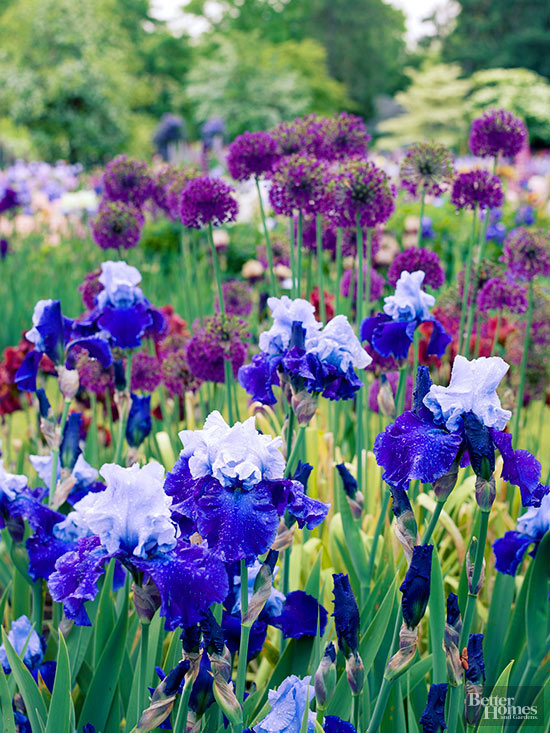
Let's face it. Even the name is scary.
But deadheading, despite the ominous sound, is nothing more than trimming off spent flowers, keeping plants tidy, and ensuring maximum bloom time. Some gardeners worry that if done imperfectly, it might harm the plant. But unless you really whack away at it, it's tough to kill or badly deform a plant by deadheading.
First and foremost, deadheading keeps your garden attractive. Nearly all flowering plants benefit from at least a little deadheading. When blooms start to fade, brown, curl, or otherwise look unattractive, that's the time to trim them off, allowing the other flowers to shine.
Summer's end is a great time to take a close look at your plants; find more tips for seasonal care here.
continue reading belowYou can often get a clue about which plants to deadhead and which to leave alone simply by watching them. If the flowers stay on the plant and become brown and unattractive, it's time to deadhead.
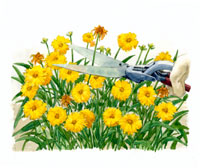
These include Coreopsis, feverfew, golden marguerites, Lobelia, sweet alyssum, smaller mums, Potentilla, flax, Aster, Gaillardia, and Ageratum. Trimming one flower at a time would be too time consuming, so instead, shear off with grass shears. Get as much of the flower stalk as possible. Avoid buds, but don't worry about taking a little foliage off with the blooms -- it'll grow back.
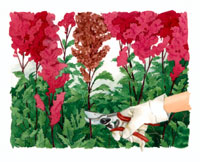
These include large marigolds, summer phlox, Astilbe, peonies, purple coneflowers, black-eyed Susans, daisies, annual and perennial Salvia, petunias, and zinnias. With hand pruning shears (also known as secateurs or pruning snips), cut off each flower individually, getting enough of the stalk so it doesn't protrude awkwardly. It's OK (and in the case of leggy plants, such as petunias, desirable) to take off a bit of the foliage, too.
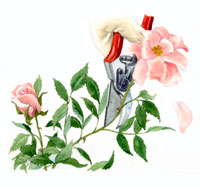
Not to be confused with pruning, deadheading roses means taking out only the minimum amount of stem to remove the flower. Make the cut at a 45-degree angle that slopes down toward the center of the rosebush. The cut should be located on a spot 1) that occurs after the first pair of leaves and 2) is directly above an outward-facing stem, that is, a stem that points away from the plant's center.
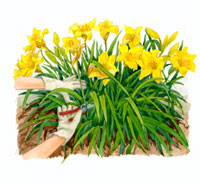
These include daylilies, larkspur, foxgloves, hostas, tulips, daffodils, Oriental poppies, and irises. Simply cut back each flower with hand pruning shears as close as possible to the spot where the stalk meets the leaves.
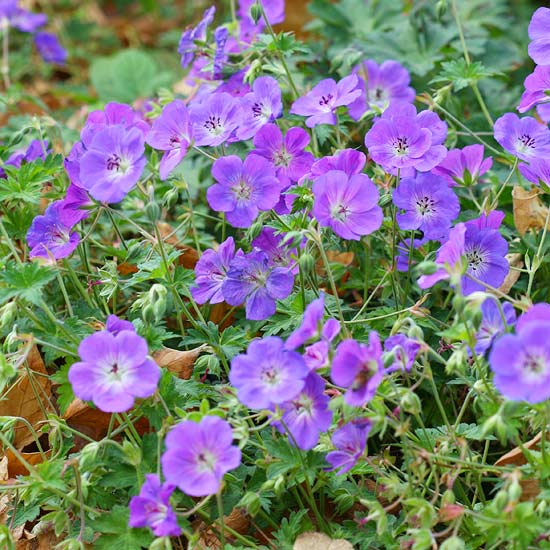
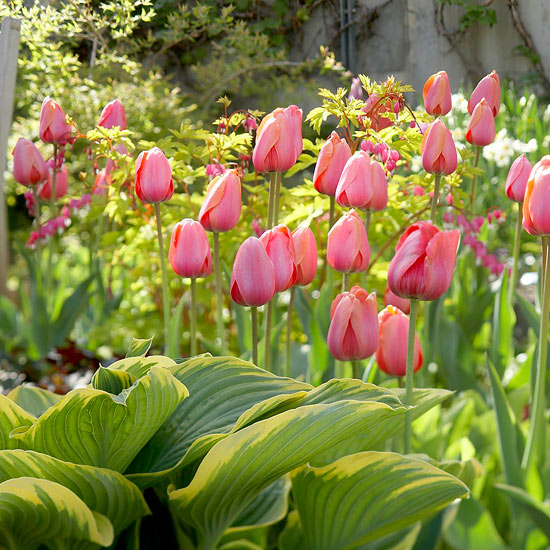 Tulips will bloom longer if deadheaded.
Tulips will bloom longer if deadheaded.
Deadheading is just one way to stretch the bloom season. Try these other ways to make color last.
Set potted annuals in the garden and move them around to areas that need an instant color lift.
Plant late-summer and autumn-flowering bulbs in early to midsummer for lovely late-season bloomers.
Apply organic mulch (bark chips or shredded leaves) to stifle weeds and retain soil moisture. Organic mulches break down and improve soil, too.
Water deeply every three to four days while young plants are establishing themselves, then cut back to weekly waterings. Later in the season, water as needed when soil is dry.
Feed perennials monthly (spring through summer) with a fertilizer that's low in nitrogen but high in phosphorus. Feed annuals every three weeks with a balanced (5-10-5) organic fertilizer.
Weed out any unwanted plants so flowers won't have to compete for nutrients.
Remove rose suckers -- the stems that grow below where the plant is grafted to the roots -- right at the rose's base as soon as you see them.
Propagate existing plants by dividing them or collecting seeds from one or two faded blooms that you don't deadhead -- the more the merrier!
Copyright © www.100flowers.win Botanic Garden All Rights Reserved